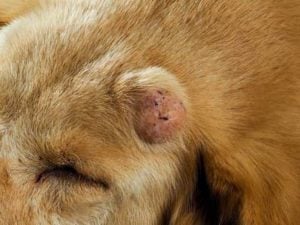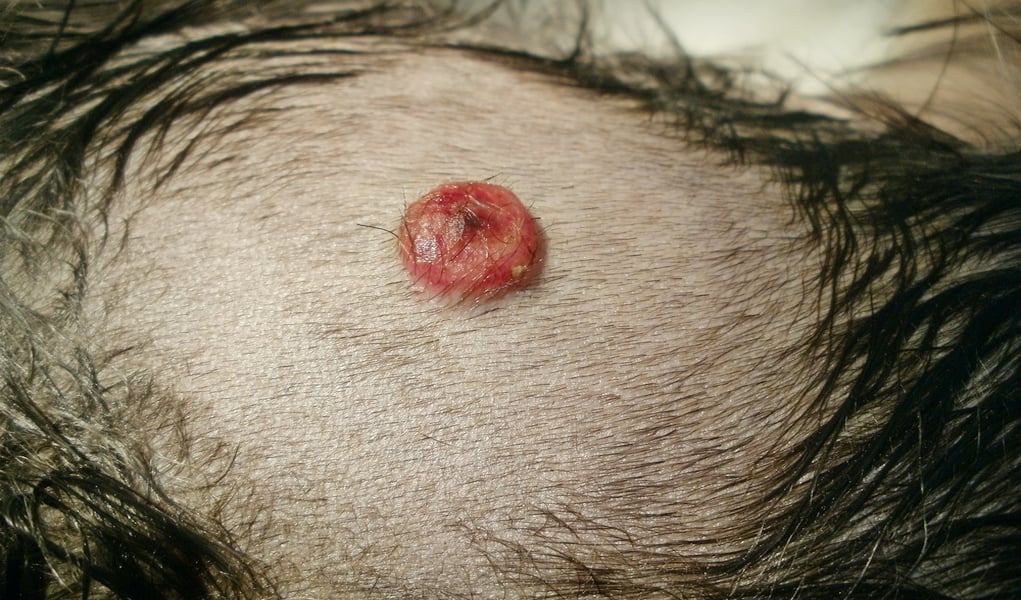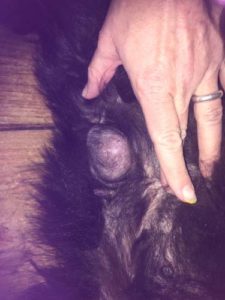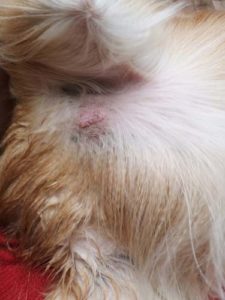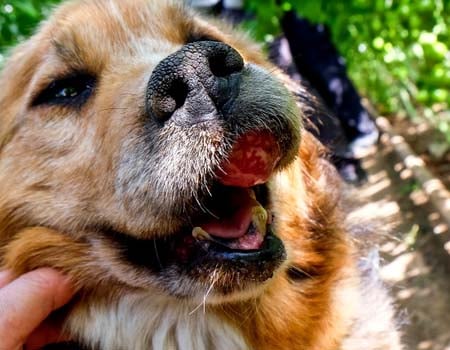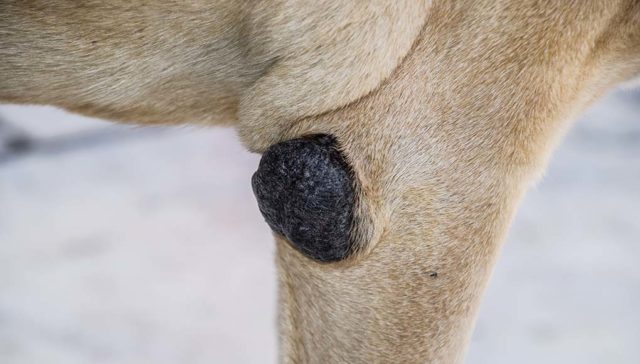
Table of Contents
Even mentioning the word “cancer” instills fear in dog owners and makes them think of the worst possible scenarios, and most commonly, their pet's death.
It is indeed a very nasty condition, and a lot of science and funds are invested into combating tumors in dogs.
Here are the most dangerous cancerous tumors in dogs, how to recognize them, and how they are treated. Knowing your enemy can help you beat it.
What Is Cancer in Dogs?
Cancer is described as a group of malignant cells, or cells that turn bad. Cancerous cells usually appear due to mutations caused spontaneously or by some outside effect.
While the division of regular cells has strict rules for spreading and multiplying, cancerous cells don’t abide by any rules. They multiply in great quantity and use the substances needed for the development of healthy cells for their own growth. This is how cancer spreads.
And if you are wondering how widespread cancerous tumors among dogs are, the National Cancer Institute’s Center for Cancer Research emphasizes that “about 6 million of the 65 million pet dogs in the United States will be diagnosed with spontaneous, naturally occurring cancer”, so it is probably more common than you think.
How to Recognize It?
Most commonly, it will look like a skin lesion or a lump on your dog’s body. If you pet your dog and notice a lump that is solid and feels like it has boundaries, it is time for a check-up.
Here's an example of what it may look like:
Enlarged lymph nodes or wounds that won’t heal for a couple of days can also point us to this dangerous disease. If you notice that your dog is in pain and has a loss of appetite, consult the vet about how to proceed.
Like every devoted dog owner, you will probably notice when there is something wrong with your dog’s mood or behavior. It doesn’t necessarily mean that any mood change means cancer, but if it lasts for a longer period of time, it’s better to be safe than sorry.
5 Most Dangerous Types of Tumors in Dogs
There are many different types of cancer and some are simply more dangerous than others. This list will help you identify some of the more dangerous cancerous tumors.
1. Hemangiosarcoma
This is one of the most dangerous tumors in dogs. It is the tumor of cells that line blood vessels but most commonly affects the heart, spleen, liver, or skin. It has the ability to spread rapidly, but in some cases, it can go unnoticed until it’s too late.
It is causing a lot of fear among dog owners because it resembles hemangioma, which is, statistically speaking, far more common. And while hemangioma is benign and results in skin mass. which can be easily removed, hemangiosarcoma results in a bump on the skin surface but only after the internal organs have already been affected.
If you see a lump on your dog’s body, don’t panic because the odds are in your favor. The first step is definitely a biopsy, which will establish if it is malignant or benign.
If it is indeed hemangiosarcoma, your vet will choose between removing the organ by surgery if it is on your dog’s spleen or chemotherapy if it is widespread or on a vital organ.
2. Osteosarcoma
Osteosarcoma affects dogs' bones, and larger dog breeds are more prone to it, but it can also happen to smaller breeds. It can also spread to vital organs, so early detection will give your dog a fair chance to beat it.
The vet will rule out other possibilities by doing an X-ray scan. If it turns out to be cancer, the solution is amputation of a limb. As frightening as it sounds, dogs have the ability to recover from it fast if you surround them with love and care, and you will have many more days to play together.
3. Liposarcomas
This type of cancer appears in fatty connective tissues of the body, and usually, it is located between muscles or around the hind legs. This is not a very widespread type of cancer, but if your dog gets it, it has the ability to metastasize very quickly to different regions of the body. It can also appear as a lump or skin excess.
The problem with this cancer is similar to hemangiosarcoma because liposarcoma looks like lipomas, which are benign skin tumors, and these are not too dangerous.
In order to be sure, your vet will do an MRI or CT scan. If your dog has the bad version of this tumor, he will choose between amputation, hemipelvectomy, or radiation. The problem with this tumor is that it doesn’t have clear boundaries, so before doing anything, it needs to be analyzed thoroughly.
4. Mastocytomas
It is more commonly known as a mast cell tumor, and it is a cancer of the dog’s skin. It appears as a skin mass that is red or pink in color, and it itches. This cancer can also develop in a dog’s lungs, nose, or mouth, and the severity depends on the location. Dogs of any age can be affected by this cancer.
PetMD explains that mast cells are filled with histamine and serotonin, so this cancer often leads to the loss of appetite and diarrhea.
Your vet will take a sample to do a biopsy, and after that, he will suggest surgery or radiation. Antihistamines will be prescribed for digestive issues until the cancer is under control.
5. Melanoma
This cancer commonly develops in a dog’s mouth. It can be malignant or benign. Breeds with a dark pigment of their mouth and tongue are more at risk of this type of cancer. It looks like a skin mass in your dog’s mouth and can spread all around the oral cavity and affect bones and tissue.
Complete removal is difficult, but surgery on some affected parts is often possible in order to decrease it. Afterward, your dog will need rounds of chemo and immune therapy. If you catch it on time, you and your dog can beat this nasty disease together.
In Summary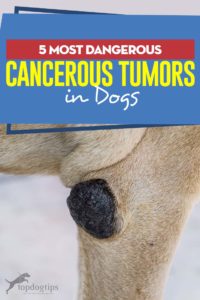
Cancerous tumors are very dangerous for dogs, and early detection is the key to controlling or curing the disease and prolonging your dog’s life. There are various types, but they often appear as weird lumps on your dog’s body, which you can feel when petting him.
Remember that many malignant tumors have their benign counterparts, so don’t despair before you check this with the vet.
READ NEXT: 7 Hidden Toxins in Your House That’re Poisonous or Cancerous to Dogs


